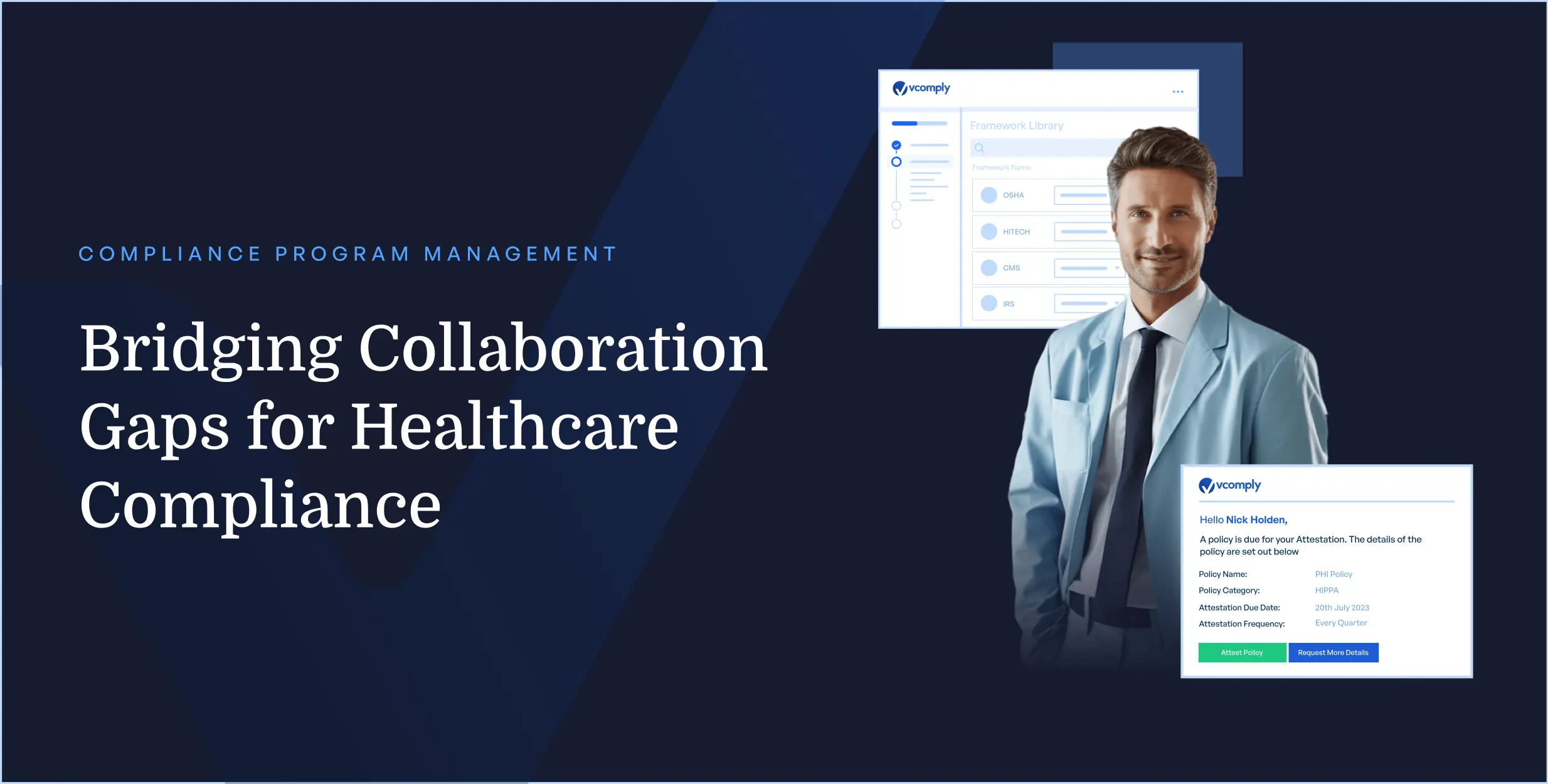Bridging Collaboration Gaps for Healthcare Compliance
Healthcare is one of the most highly regulated industries, requiring meticulous involvement from all stakeholders across an organization to achieve compliance success.

The overuse of traditional communication tools, such as emails and phone calls, is accessible but not scalable, and it lacks centralized communication.
Modern healthcare compliance officers require contemporary solutions to address the challenges related to compliance collaboration and communication.
Challenges
Compliance managers and officers face challenges in establishing collaboration across the organization, whether it involves the legal, human resources, finance, IT, or administration departments.
You are responsible for overseeing compliance in all of these areas, but you may be struggling with:
- Sending emails to communicate compliance tasks but being unable to track team due diligence.
- Using phone calls as reminders results in an information gap and a lack of consistency.
- Manually conducting physical meetings in various locations which consumes excessive time.
Solution
VComply is a unique platform that allows you to onboard stakeholders from all departments and locations. It establishes a virtual space for sharing tasks, information, and documents, eliminating the need for manual handling.
Features to assist healthcare compliance with collaboration include:
Steps to follow
Follow the simple steps below to create a collaborative compliance solution for your healthcare compliance team:
Step 1: Onboard teammates to create a virtual workspace
Effortlessly onboard your compliance team members within the VComply platform using only their email addresses.
Assign role-based work permissions and control information access to effectively manage compliance activities across all stakeholders.
Create user groups for enhanced collaboration and establish a unified space to monitor individual responsibilities.
Step 2: Create department and location-specific responsibility centers
Establish responsibility centers tailored to specific departments or locations.
Associate specific users with their designated responsibility centers.
Create related compliance tasks and promote collaboration across the entire organization.
Step 3: Create compliance responsibility-specific workroom
No longer will you need to share information through emails and phone calls. When you create a compliance responsibility, a dedicated workroom is automatically generated for that specific task.
Stakeholders can track the progress of the responsibility and exchange information within the workroom. This centralizes information and eliminates the need for time-consuming meetings.
Step 4: Collaborate through easy comment and feedback sharing
The responsibility workroom includes a feature that allows you to share your feedback and comments simply by typing and sharing them. The assignee will receive real-time updates on all comments and feedback.
Step 5: Automate task and activity reminders
Notifying individuals about their compliance tasks is now easier than ever.
Once a compliance responsibility is created, all relevant stakeholders receive real-time email and platform notifications.
Automatic alerts are consistently sent to all stakeholders until the expected work is completed. This significantly reduces the likelihood of missed communication.
Step 6: Share files and folders through the digital space
Sharing files and documents is as simple as uploading them to the designated workspace for that responsibility. Create folders customized for specific responsibilities.
Once uploaded, all stakeholders can access these files and documents from anywhere, at any time, eliminating information gaps and reducing the risk of information leakage.